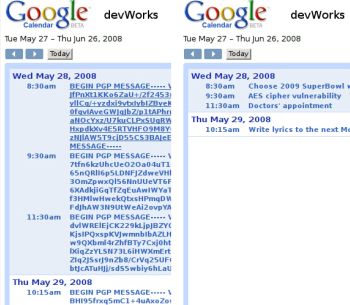Amazon Glacier is the cheaper, slower cousin to Amazon’s S3 storage. Whereas S3 currently costs US$0.095 per gigabyte per month, Glacier is a mere US$0.01 per gigabyte per month.
The tradeoff for the lower cost is that Glacier is effectively offline storage. If you want to download the data you have stored, you have to request that Glacier retrieve the data and make it available for download, and fulfilling that requests “typically” takes 3-5 hours according to Amazon.
Since the expectation is that Glacier data will only be accessed infrequently, there is also a US$0.12 per gigabyte charge to download more than a nominal 1 gigabyte per month.
So, storing 1 terabyte of data with Glacier will cost you roughly $10/month, but if you ever want to download it all in a month, that would run you $120.
Where something like Glacier shines is in long-term backups. For example, I have a 3 terabyte drive that stores all of my personal data. I have a couple of extra hard disks that I use to create local backups and store at various locations.
I used to use Amazon’s S3 as an online backup repository, but as I got closer to having 1 terabyte stored there, the cost became prohibitive and I ended up deleting it. But using something like Glacier, I could store 3 terabytes online for $30/month. The limitations on accessing the data really don’t concern me, since what I’m looking for is an offsite repository to store my data in case I experience a catastrophic failure with my local backups.
There are just two challenges: uploading the data to Glacier and protecting it adequately.
I’m primarily a Windows users, and have had a lot of success with FastGlacier, a freeware Windows tool designed to make it easier to upload data to Glacier and keep Glacier and local data in sync.
Glacier has a number of complications that S3 does not, and a program like FastGlacier helps smooth out some of the rough edges for those of us who just want to get our data into Glacier.
Protecting that data is another matter. Amazon encrypts the data that is uploaded to Glacier, but it is encrypted in a way that Amazon itself can decrypt. So if Amazon were hacked, for example, there is the potential that the keys to unlocking any data stored on Glacier (or S3) could be compromised.
It is absolutely crucial that any data intended for long-term storage be encrypted client-side by the person doing the uploading. Again, since I am primarily a Windows user I use the open source Gpg4Win to encrypt all of my files before I upload them to Glacier. Gpg4Win adds a GpgEX option in the file manager’s context menu so that it is relatively easy to encrypt specific files or entire directories.
